How to Make Simple Wall Art from Canvas
Showcase Your Own Art By Creating A Canvas
Creating custom canvas prints is a fun way to make your home unique. As a DIY lover, I’ve found it’s both cheap and fulfilling. You can get acrylic paints for $0.50 to $3.00 and canvases for $10 to $40.
DIY wall art can save you up to 50% compared to store prices. About 80% of crafters find abstract art easy to start with. YouTube has over 500,000 tutorials to help you.
My experience with canvas art shows that creativity has no limits. This guide will help you make custom canvas prints that show off your style. It will make any room come alive.
Sharing your DIY projects on social media can get 50% more engagement. You’ll not only make beautiful art but also inspire others. Let’s explore the world of canvas art together!
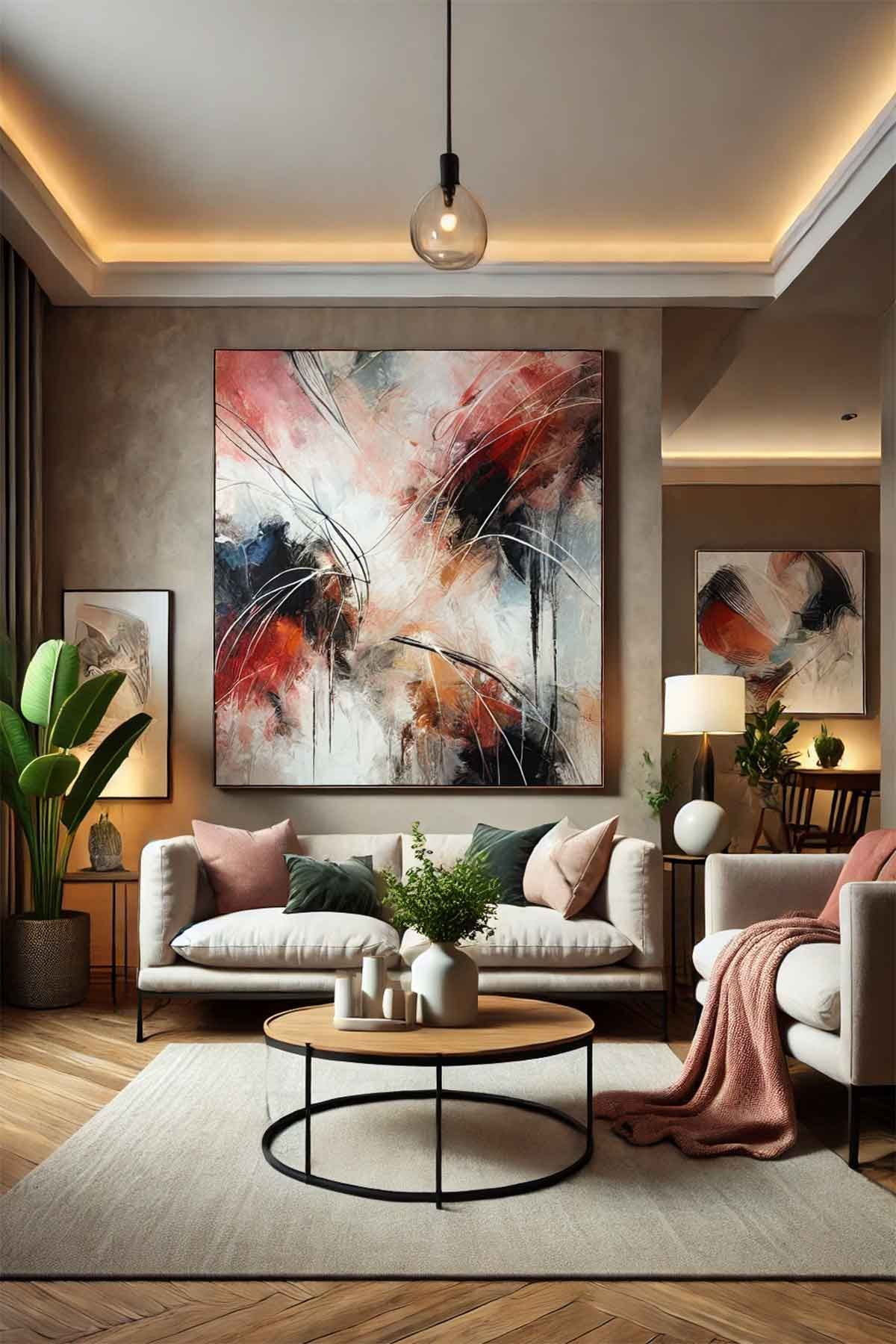
Introduction to Canvas Wall Art
Canvas wall art has changed how we decorate our walls. It lets you show your creativity and make spaces that are truly yours. I’ll show you the world of canvas art for sale and how to make your own.
Let’s dive into what makes canvas art unique. It’s why more people are using it to decorate their homes.
What is Canvas Wall Art?
Canvas wall art is when you paint or print designs on stretched canvas. These pieces can be:
- Personal photographs
- Original paintings
- Digital art prints
- Mixed media compositions
Benefits of Making Your Own Art
Creating your own wall decor has many benefits:
- It’s cheaper than buying expensive art
- You have full control over the design
- You can match your home’s style
- It’s rewarding to display your own work
Popular Styles and Trends
| Style | Description |
|---|---|
| Minimalist | Clean lines, neutral colors |
| Abstract | Bold colors, experimental shapes |
| Photographic | Realistic images, high-quality prints |
“Art enables us to find ourselves and lose ourselves at the same time.” – Thomas Merton
Whether you’re new to art or have experience, canvas wall art is a great way to express yourself. With just 15 minutes of work, you can turn your home into a gallery that shows off your story.
Choosing Your Canvas Size
Creating stunning modern canvas wall art starts with picking the perfect canvas size. The right size can change your space, making affordable canvas prints look great and eye-catching.
It’s key to know about canvas sizes to get the best look. Let me show you what to think about when picking your ideal canvas size.
Standard Canvas Size Ranges
Canvas prints come in many standard sizes. They fit different spaces and design tastes:
- Mini Canvases: 20×20, 20×30
- Medium Canvases: 40×40, 40×50
- Large Canvases: 60×60, 60×75 and bigger
Tips for Selecting the Right Size
Here are some expert tips for picking your canvas size:
- Wall art should take up 60% to 75% of the wall space
- Place the artwork about 60 inches from the floor
- Keep 6-12 inches of space above furniture
| Wall Dimensions | Recommended Canvas Size | Ideal Placement |
|---|---|---|
| 2.8m tall, 1.5m wide | 1.5 to 2.0 meters high (for a big impact) | Centre at eye level, use smaller canvases for a lesser impact. |
| 180cm wide couch | 1 to 1.3 metres wide | 15-30 cm above furniture |
“The right canvas size can transform a room from ordinary to extraordinary.” – Interior Design Principle
Canvas Selection Tips
Pro tip: Use temporary adhesive tape to see how canvas sizes look on your wall before deciding. This helps you see how the artwork will fit and feel in your space.
Remember, bigger canvas prints make a bigger impact. Don’t be afraid to go big with your modern canvas wall art!
Don’t forget about weight. Choose a canvas between 250-400 grams in weight. Art Supplies Australia offers great options for both beginners and experienced artists.
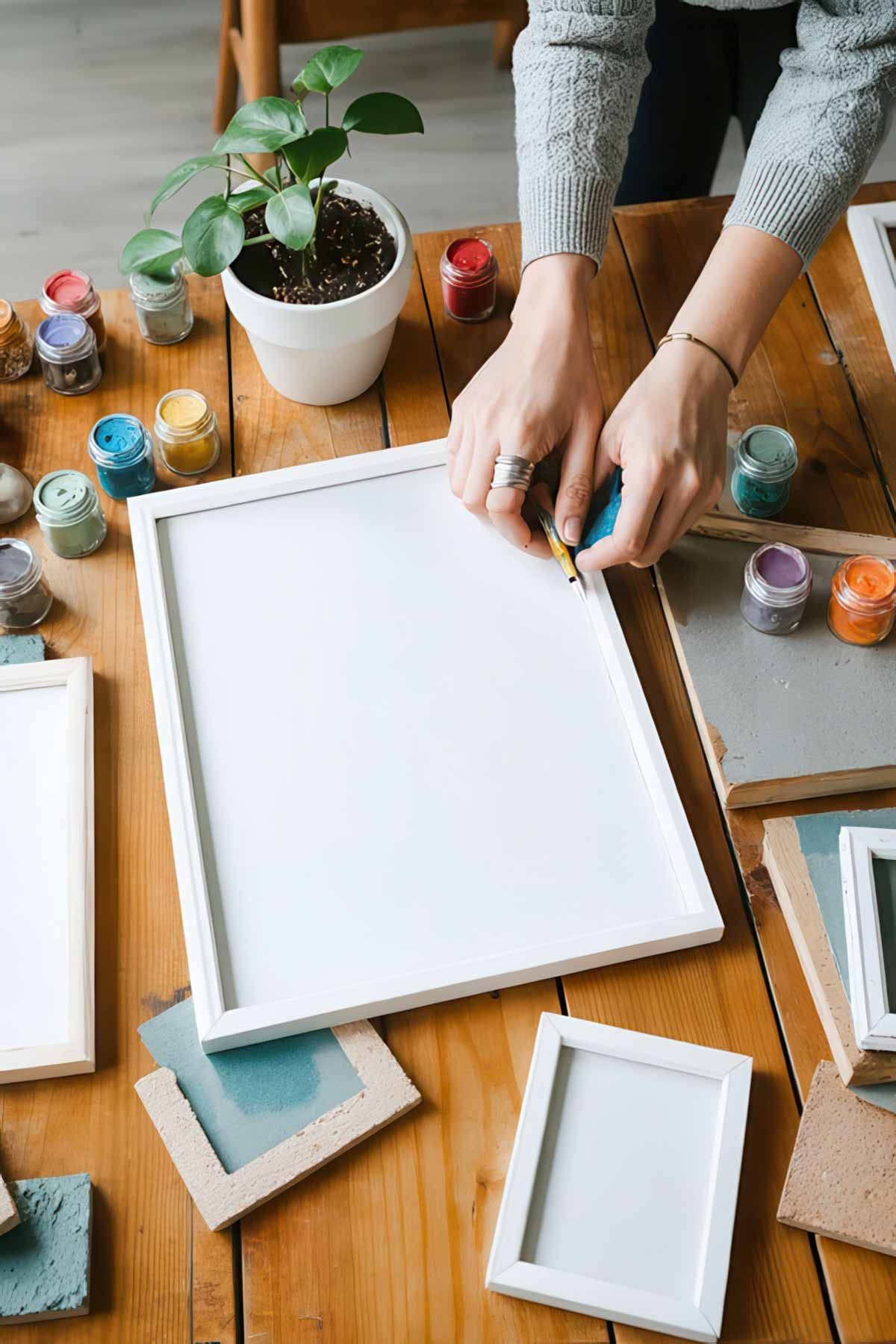
Selecting Your Painting Supplies
Creating unique wall art ideas starts with the right tools and materials. As an artist, I’ve found that the perfect supplies are crucial. They can turn your canvas painting into a stunning masterpiece.
Before starting your art project, you’ll need some key supplies. Here are the essential tools every aspiring artist should have:
- High-quality paintbrushes in various sizes
- Palette knives for texture and detail work
- Sponges for creating unique texture effects
- Protective drop cloth or workspace covering
- Easel or stable work surface
Recommended Paint Types for Canvas Art
When painting on canvas, you have several options:
- Acrylic Paint : Quick-drying and versatile, perfect for beginners
- Oil Paint : Rich colors and slow drying time for blending
- Watercolor : Requires a special watercolor ground primer
“The right paint can transform your canvas from a blank surface to a vibrant work of art.”
My top paint brand recommendations are Liquitex for acrylics, Winsor & Newton for oils, and Daniel Smith for watercolours. These brands offer excellent coverage and durability. Your unique wall art ideas will look professional and last for years.
Remember to prime your canvas with gesso for best results. Apply 2-3 coats with 30-minute drying time between applications.
Gathering Inspiration
Starting with the right inspiration is key to creating high-quality canvas art . As an artist, I’ve found many ways to spark creativity. These methods help me come up with unique ideas for canvas wall art that reflects my personal style.
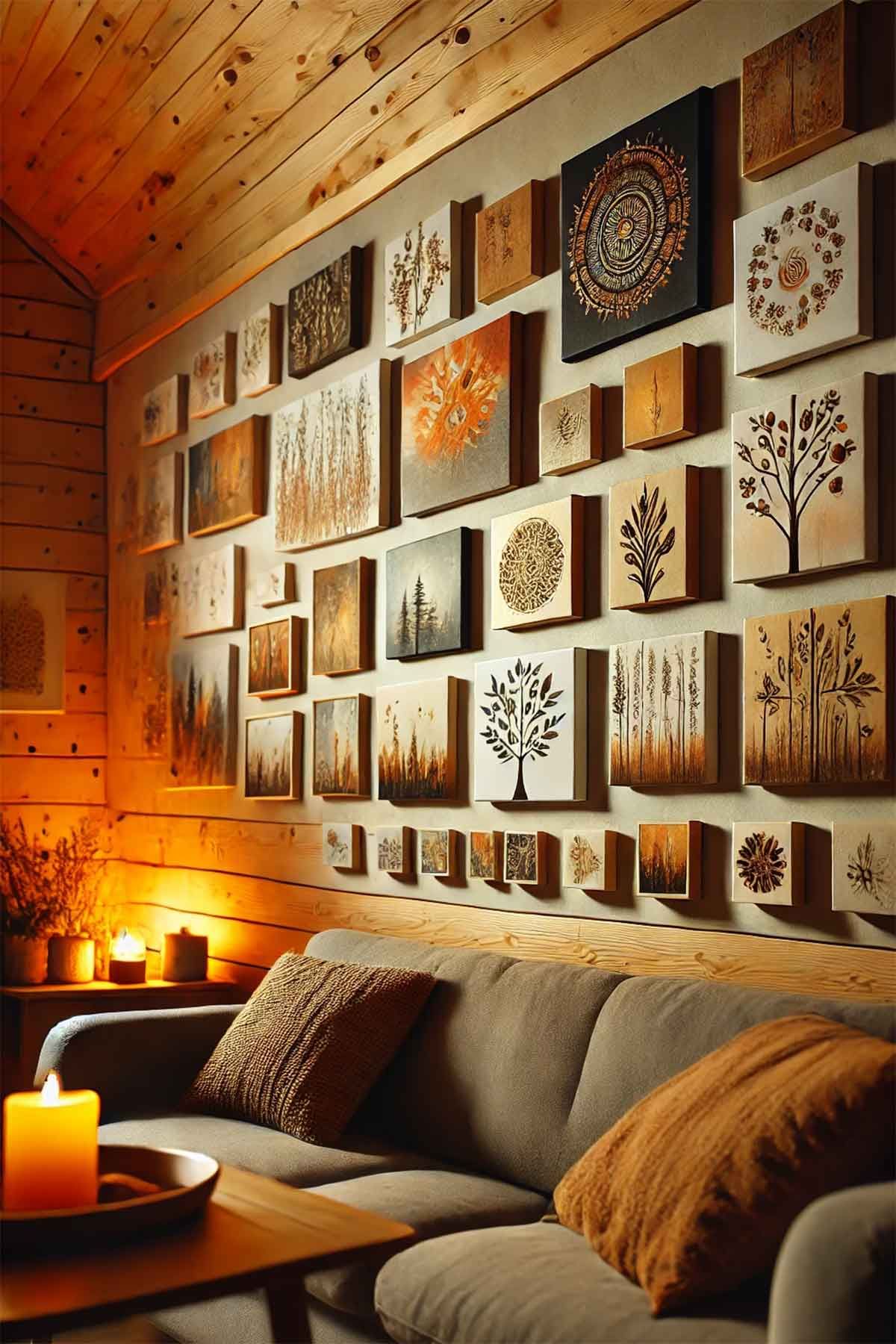
The digital world is full of artistic inspiration. Here are some top sources for creative ideas:
- Pinterest boards with different art styles
- Instagram art communities
- Online art galleries like The National Gallery of Art
- Free art collections from The Met and Art Institute of Chicago
Finding Ideas Online
Digital platforms have changed how we find and create art. There are thousands of public domain art resources online. You can find inspiration from classic to modern designs. Pro tip: Save images that resonate with your artistic vision and create a digital mood board.
Experimenting with Colour Palettes
Color is a powerful storytelling tool in high-quality canvas art .
Exploring colour palettes can make your canvas wall art stand out. I suggest trying:
- Complementary color schemes
- Monochromatic color ranges
- Seasonal color inspirations
- Emotional color psychology
The best canvas art shows your unique perspective. Don’t be afraid to try unexpected colour combinations. They can tell your personal story.
- Blue Hues can create calming spaces.
- Golds and Oranges will help to warm a cold space
- Reds and vibrant colours encourage creativity and may increate productiveness
- Purples and lilacs can help to brighten a monochrome space
Preparing Your Workspace
Creating personalized wall décor starts with setting up your workspace. Your art station is crucial. It can turn a simple project into a professional-quality custom canvas print.
Before starting your art journey, here are some key tips for the perfect art environment. The right workspace boosts creativity and keeps your supplies safe.
Essential Workspace Preparation
- Choose a well-lit area with natural or bright artificial lighting
- Select a flat, stable surface for your canvas
- Protect surfaces with drop cloths or plastic sheets
- Ensure proper ventilation to manage paint fumes
Organizing Your Art Station
An organized workspace is vital for stunning personalized wall décor . Organize your supplies to work more efficiently.
| Supply Category | Recommended Storage | Accessibility Rating |
|---|---|---|
| Paints | Tiered Rack | High |
| Brushes | Vertical Holder | Medium |
| Canvas | Flat Storage Rack | High |
“A clean workspace is the foundation of creative inspiration.” – Professional Artist
Follow these strategies to create an ideal environment for making amazing custom canvas prints . Your unique artistic vision will shine through.
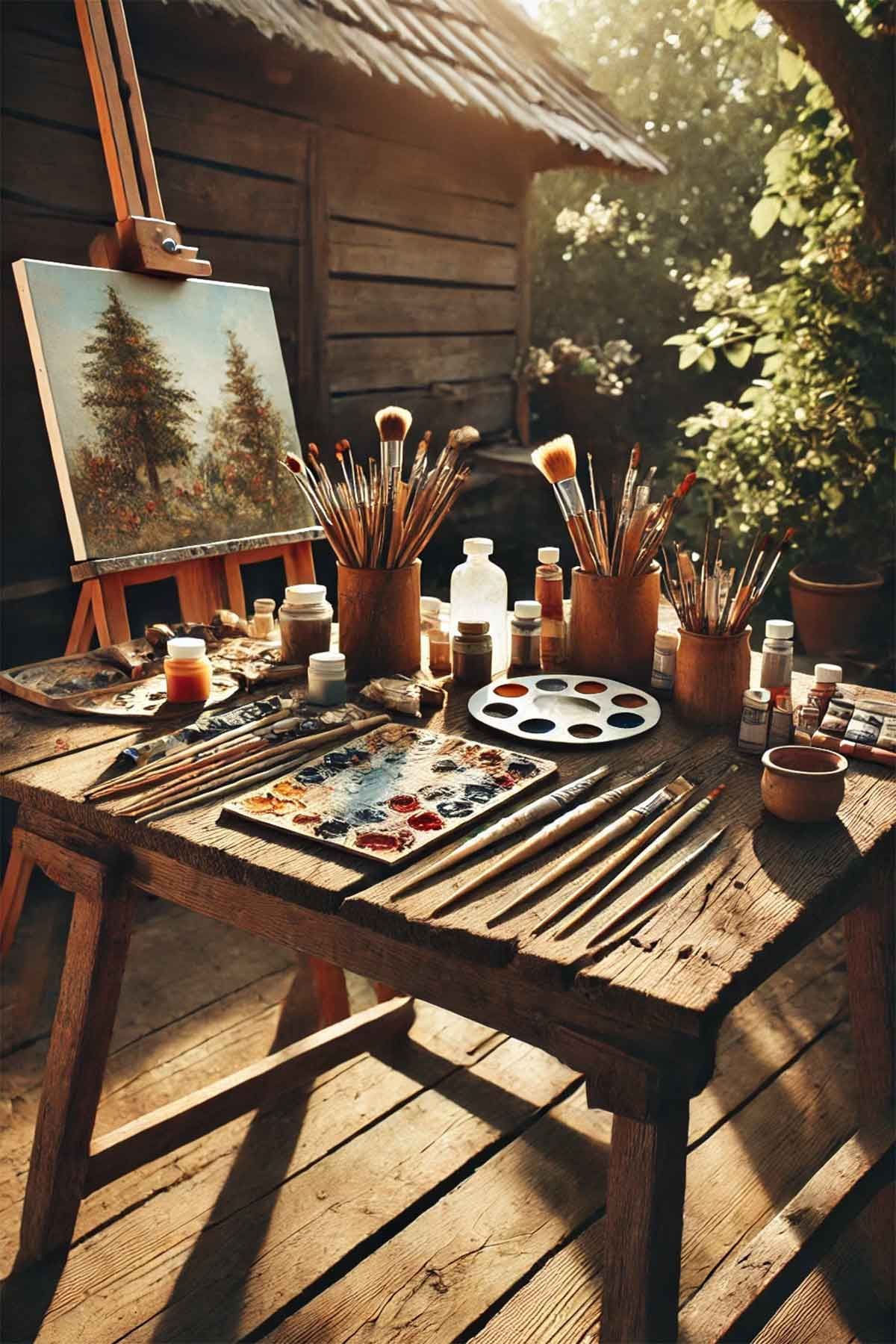
Sketching Your Design
Starting with a solid sketch is key to creating stunning modern canvas wall art . Planning is essential to turn your creative vision into high-quality canvas pieces.
Sketching acts as a blueprint for your artwork. It’s vital for both new and seasoned artists. These techniques lay the groundwork for your canvas masterpiece.
The Importance of Planning
A well-thought-out sketch can elevate your artwork from amateur to professional. Here are my top tips:
- Start with light pencil lines to sketch your design
- Make several rough drafts to perfect your idea
- Think about composition and balance before you paint
Basic Sketching Techniques
When sketching for canvas art, focus on these key areas:
- Proportion : Make sure your main elements are the right size
- Perspective : Add depth with strategic line placement
- Composition : Balance your visual elements on the canvas
“Every great painting begins with a simple sketch.” – Anonymous Artist
Sketching is about exploring and preparing. Aim to capture the essence of your vision, not perfection.
Painting Techniques for Beginners
Creating affordable canvas prints is all about mastering some key painting techniques. I’ll show you how to turn your unique wall art ideas into beautiful pieces. Whether you’re new to art or want to improve, these tips will boost your confidence and creativity.
Exploring Different Brush Strokes
Brush strokes are the base of canvas art. Try out different techniques to add depth and interest:
- Broad wash strokes for background color
- Dry brush technique for textured effects
- Stippling to create intricate patterns
- Cross-hatching for dimensional looks
Using Colors for Depth
To make unique wall art, learn about color layering. Acrylic paints are great for beginners, with 85% of artists starting with them. Start with a neutral base coat, then add extra colours:
- Begin with light background colors
- Add mid-tone shades for dimension
- Highlight with darker accent colors
- Use a 70% glue to 30% water mixture for smooth blending
“Art is not about perfection, but expression and creativity.”
My best advice for affordable canvas prints is to keep practicing. Each project teaches you something new. Don’t be afraid to try new things – your unique style will grow with time and effort.
Adding Texture to Your Canvas
Creating high-quality canvas art is more than just painting. It’s about adding texture and dimension to bring your artwork to life. I’ll show you how to turn a flat canvas into a masterpiece that invites viewers to touch and explore.
Texture can make your canvas art stand out. I’ll share some techniques to add depth and character to your projects.
Exploring Palette Knives and Sponges
Palette knives are amazing for creating textures. I use them to:
- Create bold, raised paint strokes
- Build layers of thick, dimensional paint
- Scrape and blend colors in unique patterns
Sponges are great for adding interesting textures too. Dab, roll, and press to get from subtle stippling to dramatic effects.
Layering
Layering is a technique that is exactly how it sounds. You create multiple layers on your art work and build texture that way. In the image below, you would create the colourful design first, leave it to dry for a few days (I always find 48 hrs + is essential) and then apply the white streaks with a very heavy paint hand.
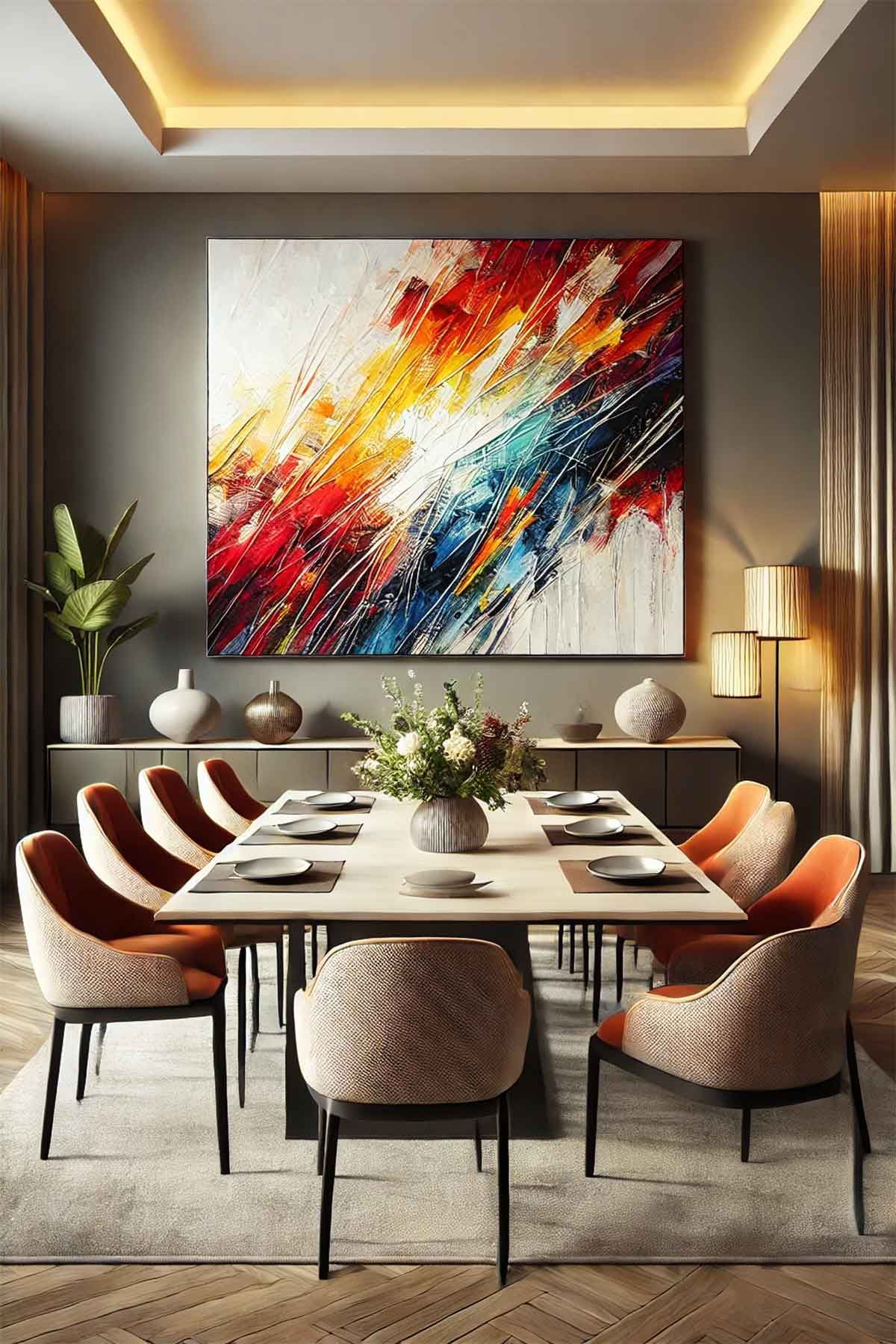
Incorporating Mixed Media
Mixed media can make your canvas art truly unique. Try adding:
- Tissue paper for delicate texture
- Sand for rough, grainy surfaces
- Fabric scraps for unexpected dimension
“Texture is the secret weapon of memorable artwork – it invites viewers to look closer and feel more deeply.”
Joint compound is a game-changer for raised designs. Apply it with a palette knife, let it dry, and then paint over for stunning three-dimensional effects. These techniques are budget-friendly and open to artists of all levels.
Remember, there are no strict rules in art. Experiment, have fun, and let your creativity guide you in making canvas wall art that truly speaks to your unique artistic vision.
Finishing Touches
Creating personalized wall décor is a fun project, but you do find yourself tempted to skip the final steps. The final steps can make your canvas art truly stand out. Let’s look at how to protect and showcase your masterpiece with professional techniques.
Sealing Your Artwork for Longevity
Protecting your canvas is key to keeping it beautiful and lasting. I suggest using a top-notch varnish to protect it from the environment. The right sealant will:
- Block harmful UV rays
- Prevent dust accumulation
- Enhance color vibrancy
- Protect against moisture
Selecting the Perfect Frame
Framing is crucial for premium canvas printing . It greatly affects how your artwork looks. Here are some options:
- Floating Frames: Create a modern, sleek look
- Traditional Wooden Frames: Classic and timeless
- Minimalist Unframed Approach: Perfect for contemporary spaces
“The right frame doesn’t just display art—it completes it.” – Art Preservation Expert
Pro tip: Pick a frame that matches your artwork and room decor. Neutral colors are best for versatile wall decor that fits any design.
Displaying Your Canvas Art
After making your custom canvas prints, it’s time to show them off. The right way to display them can turn your modern canvas wall art into a stunning centrepiece. It will show off your personal style.
Creative Hanging Techniques
Don’t just hang your artwork in the middle. Try out some new ways:
- Create an asymmetrical gallery wall with different canvas sizes
- Use floating shelves for a flexible display option
- Experiment with grid-style arrangements
- Mix canvas prints with other decorative elements
Arranging Multiple Pieces
Planning a display for multiple canvas prints needs some thought. Here are some tips:
| Arrangement Type | Best For | Visual Impact |
|---|---|---|
| Grid Layout | Symmetrical spaces | Structured and organized |
| Staggered Arrangement | Dynamic living areas | Energetic and playful |
| Vertical Alignment | Narrow walls | Creates height illusion |
Pro tip: Think about your wall’s lighting and space when placing your custom canvas prints. Natural light can make the colors pop and add depth.
Artwork is not just decoration—it’s a reflection of your personal journey and creativity.
Did you know 70% of homeowners see wall art as a key part of their home décor? With these tips, you’ll make a display that shows off your talent and makes your space look great.
Caring for Your Canvas Art
Keeping your canvas artwork in top shape needs attention and the right care. With proper care, your canvas prints can last for decades. This makes your investment in affordable canvas prints a smart choice.
Essential Maintenance Tips for Longevity
I’ve found some key ways to protect your canvas artwork. These tips help keep it looking great:
- Use a soft microfiber cloth for gentle dusting
- Avoid direct sunlight to prevent color fading
- Maintain a consistent room temperature
- Keep artwork away from high-humidity areas
Cleaning Techniques
Cleaning your canvas needs care. Here’s what I suggest:
- Dry dusting with a soft, clean brush
- Spot cleaning with a slightly damp microfiber cloth
- Never using harsh chemical cleaners
- Avoiding excess moisture on the canvas surface
Proper care can extend the life of your canvas prints by up to 30% using UV-protective techniques.
Storage and Display Recommendations
| Location | Recommended | Avoid |
|---|---|---|
| Temperature | Consistent room temp | Extreme hot/cold |
| Humidity | Low humidity | Bathrooms, basements |
| Lighting | Indirect light | Direct sunlight |
Remember, a little preventative care goes a long way in maintaining the beauty of your canvas artwork for sale. By following these guidelines, you’ll ensure your affordable canvas prints remain vibrant and stunning for years to come.
Conclusion and Next Steps
Your journey into creating high-quality canvas art has been exciting. You’ve learned techniques to turn blank canvases into stunning pieces. Each brushstroke is a chance to grow your skills and show your unique style.
Keep practicing to get better at canvas painting. Try new techniques, colors, and designs. This will help you make art that’s truly yours. Don’t be scared to try new things and push your limits.
Embracing Your Creative Journey
The world of canvas art is full of possibilities. Look for local art groups, online tutorials, and workshops to learn more. Your artistic journey is all about learning, trying new things, and bringing your ideas to life.
Resources for Artistic Development
For more learning, check out Skillshare, YouTube art channels, and art websites. They have lots of tutorials and inspiration. Also, visit art supply stores and galleries for more insights and resources.
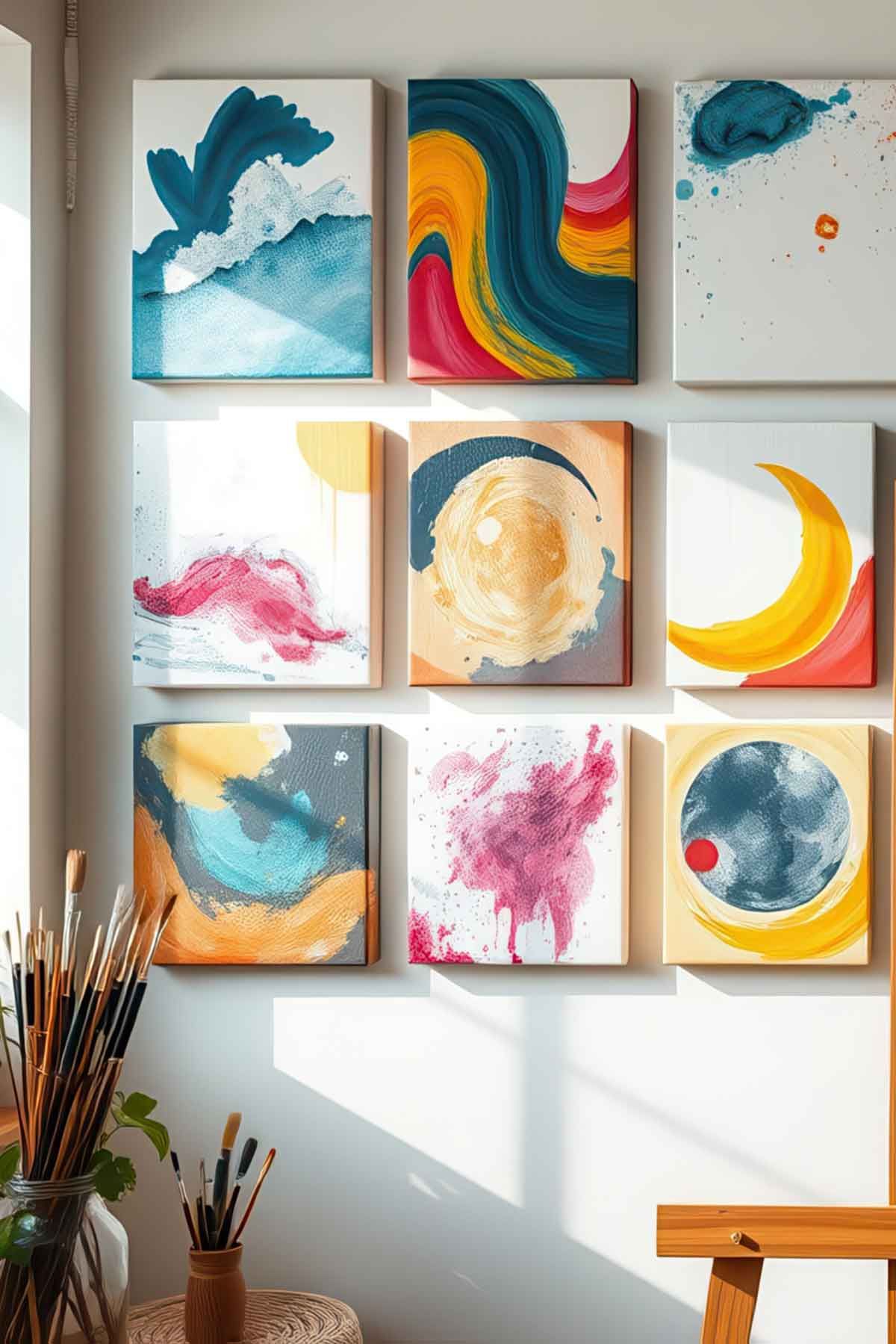
FAQ
What supplies do I need to start making canvas wall art?
To start, you’ll need a canvas, paints, brushes, a palette, and knives. An easel, drop cloth, and protective gear like an apron are also important. Choose quality brushes and paints from brands like Winsor & Newton or Golden for the best results.
How do I choose the right canvas size for my space?
Measure your wall and think about your room’s layout. Canvas sizes range from 8×10 inches to 36×48 inches. Pick a size that covers 50-75% of the wall, leaving room for other decor.
Do I need to be an experienced artist to create canvas wall art?
No, you don’t need to be experienced! Techniques like abstract painting, stenciling, and mixed media are easy for beginners. With practice and creativity, anyone can make beautiful canvas prints.
How much does it cost to make my own canvas wall art?
Creating canvas prints can cost between -. A basic canvas is -, paints -, and tools -. This is much cheaper than buying pre-made artwork.
How do I protect and maintain my canvas artwork?
Seal your artwork with a clear varnish. Avoid direct sunlight and dust gently with a soft cloth. Keep your canvas in a room with stable temperature and humidity to prevent damage.
What painting techniques are best for beginners?
Beginners should try color washing, sponge painting, or abstract designs with palette knives. Acrylic paints are great because they dry fast and are easy to use.
Can I create canvas art without traditional painting?
Yes! Try photo transfers, decoupage, stenciling, or mixed media with fabric, paper, or other materials. These techniques add interesting textures and designs.
How long does it take to complete a canvas art project?
The time it takes depends on the project’s complexity. Simple abstracts might take 1-2 hours, while detailed ones could take days. Enjoy the creative journey and don’t rush!

About The Author
I'm Channing and I am the driving force behind Platypus and Pine. I've had over 30 years of experience in designing, renovating and customising Australian homes.
I've used everything from aluminium to velvet as decor choices and love a wide variety of styles and themes.
My absolute favourite is Mid Century Modern and I was fortunate enough to spend 2 weeks in Palm Springs for Modernism week just last year.
